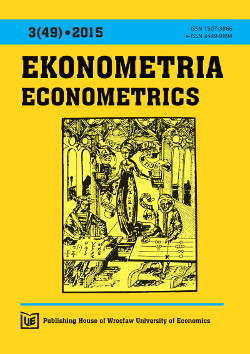Knowledge-intensive business services – state and forecast of development
Knowledge-intensive business services – state and forecast of development
Author(s): Anna SkórskaSubject(s): Economy
Published by: Wydawnictwo Uniwersytetu Ekonomicznego we Wrocławiu
Keywords: services; employment; development; KIBS
Summary/Abstract: Knowledge-intensive business services are one of the most dynamically developing areas in contemporary economies and at the same time they constitute one of the fundamental pillars of a knowledge economy. The services are provided by private enterprises, the activity of which is mostly based on the professional knowledge of workers. They supply knowledge-based products and services delivering satisfaction to intermediate demand. These are related, among others, to research and development activity, legal activity, activity in the sphere of architecture and engineering or information technology services. Interest in knowledge-intensive business services (KIBS) is a result of rapidly occurring changes in recent decades, the creation of a knowledge economy and an information society, the growing importance of knowledge and human capital as well as innovativeness. The goal of the article is to present the changes occurring in the sphere of KIBS in Poland between 2005 and 2012 with special attention focussed on employment and its forecast.The research paper is focused on the assessment of the usefulness of adaptive methods in forecasting demographic variables. The goal of the paper is to conduct the retro and prospective analysis of selected demographic values in the sphere of changes in time, and also to indicate an efficient method for the forecasting of the studied values in subsequent periods. The time series for Poland for the period between 2000 and 2013 are the basis for the development of the forecast. Mean squared errors of ex post forecasts are used as forecast quality measures. The results of the study show that among the applied methods of forecasting, the method of creeping trend with harmonic weights is the most suitable as it gives the smallest forecast errors.
Journal: Ekonometria
- Issue Year: 2015
- Issue No: 49
- Page Range: 66-77
- Page Count: 12
- Language: English

